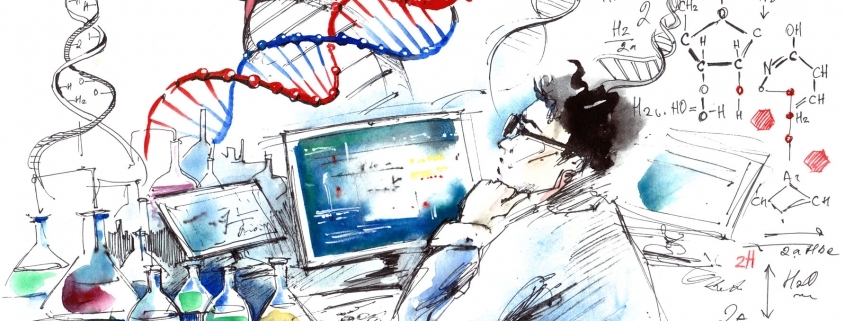Coming Full Circle: Bringing Art Back to Marketing Science
Yesterday was my first day (back) on the job at MarketBridge leading marketing analytics. I’ve been gone for nine years, and it is truly great to be back at this special organization. This return to my roots, with person after person telling me “welcome home,” brought on a wave of nostalgia, and caused me to do quite a bit of reflection on the differences in our industry between then and now. It’s also caused me to think about what it means to come full circle.
I looked out over a room of much younger faces and told a few stories of the early days of marketing analytics. I’m sure I bored the hell out of everyone. I talked about how “back then” (in the dark ages, 15 years ago) you needed an expensive statistics software license (e.g. SAS or SPSS), bare metal servers, and some fairly arcane knowledge to do marketing analytics. Relatively very few people were doing really interesting stuff.
Today, that software is free, anyone can buy time and space on AWS for pennies, and pretty much any model you can think of has a package or library available in R or Python. Consequently, the novelty of the term “marketing science,” which some friends of mine at IBM cooked up, isn’t a novelty at all.
All of the tools, Stack Overflow articles, LinkedIn groups, and degree programs have certainly made marketing science and analytics a lot more accessible for organizations. For example, building a propensity model is certainly a lot easier and less expensive. If the goal is to score a lead on its likelihood to close, and assuming the data exists, an analyst with a few years of experience can do a serviceable job with a Jupyter notebook and an AWS login.
Today, data science and marketing go together like peas and carrots.
However, the state of the art in marketing science has changed in the intervening years too. Just like animals and plants rapidly adapt to environmental stresses in nature, buyers have evolved as well. While storage, processing power, and algorithms have all been getting cheaper, so have marketing touches. Buyers have become increasingly immune to crude, and even “clever” tactics. Scoring models and attribution are now table stakes.
Buyers now want to be taught, not told. They want to explore, not be led. They want to be rewarded for their time, not feel dirty after a ten-minute prospecting call.
I am calling this new reality Marketing Analytics 2.0, mainly because I’m not very creative.
What does this mean?
In this new world, marketing scientists will now face new, more interesting challenges. This will mean pushing beyond the obvious data sources to find new signals that define buyer-needs at a more meaningful level. It will mean going back to some of our “basic” tools, such as rich buyer journey research or deep customer insights, and driving these “artful tools” back into decision models. And, it will mean putting the power of analytics into more hands throughout the marketing and sales department. Think of an analytics “toolkit” that can be used by creatives, researchers, pre-sales people, etc., that brings all “analytics components” to bear on whatever problems these practitioners are working on. In other words, bringing human intelligence together with artificial intelligence.
These are just some initial thoughts, but I’m increasingly convinced that Marketing Analytics 2.0 will bring an explosion of creativity to organizations and that it will ultimately drive better outcomes for both companies and buyers. This new era in marketing analytics won’t be defined by better algorithms. It will be defined by more comprehensive, creative thinking, and by remarrying marketing analytics with the creative side of marketing.
I’m really excited to have come full circle, and to start this journey, again.





